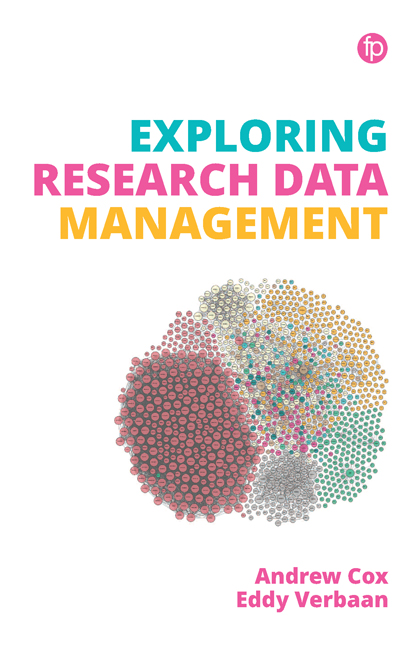Book contents
- Frontmatter
- Contents
- List of tables and figures
- 1 Introducing Research Data Management
- 2 The Social Worlds of Research
- 3 What Are Research Data?
- 4 Case Study of RDM in an Environmental Engineering Science Project
- 5 RDM: Drivers and Barriers
- 6 RDM as a Wicked Challenge
- 7 Research Data Services
- 8 Staffing a Research Data Service
- 9 Requirements Gathering for a Research Data Service
- 10 Institutional Policy and the Business Case for Research Data Services
- 11 Support and Advice for RDM
- 12 Practical Data Management
- 13 Data Management Planning
- 14 Advocacy for Data Management and Sharing
- 15 Training Researchers and Data Literacy
- 16 Infrastructure for Research Data Storage and Preservation
- 17 Evaluation of RDS
- 18 Ethics and Research Data Services
- 19 A Day in the Life Working in an RDS
- 20 Conclusion: the Skills and Mindset to Succeed in RDM
- Index
19 - A Day in the Life Working in an RDS
Published online by Cambridge University Press: 21 September 2019
- Frontmatter
- Contents
- List of tables and figures
- 1 Introducing Research Data Management
- 2 The Social Worlds of Research
- 3 What Are Research Data?
- 4 Case Study of RDM in an Environmental Engineering Science Project
- 5 RDM: Drivers and Barriers
- 6 RDM as a Wicked Challenge
- 7 Research Data Services
- 8 Staffing a Research Data Service
- 9 Requirements Gathering for a Research Data Service
- 10 Institutional Policy and the Business Case for Research Data Services
- 11 Support and Advice for RDM
- 12 Practical Data Management
- 13 Data Management Planning
- 14 Advocacy for Data Management and Sharing
- 15 Training Researchers and Data Literacy
- 16 Infrastructure for Research Data Storage and Preservation
- 17 Evaluation of RDS
- 18 Ethics and Research Data Services
- 19 A Day in the Life Working in an RDS
- 20 Conclusion: the Skills and Mindset to Succeed in RDM
- Index
Summary
Aims
The aim of this chapter is to give you a more vivid sense of what working in RDM is like through a sketch of what this looks like on a day-to-day basis for someone whose main role is RDM.
RDM in practice
There are many roles in a university that engage with research data management. Research administrators prepare grant applications or manage post-award administration that involves RDM. IT professionals manage the hardware and software that our RDM infrastructure uses. A librarian might help a researcher identify suitable datasets for re-use. But there are only a handful of roles where RDM is a substantial part of a job description. Examples are research support librarians, research data management advisors, repository managers, and research data coordinators. What this might be like will vary a lot between institutions, depending on their level of commitment to RDM.
In this chapter we explore the daily experience of someone in the role of Research Data Manager. Everyday work with research data management in this role is likely to include three areas:
strategic development
advocacy, training and support
repository and infrastructure management.
Strategic development
Strategic work is the future-oriented aspect of the job. It involves such things as policy development, including keeping the RDM policy up to date, and plans for future service development. It also involves regularly evaluating where you are, for example using a maturity framework or through measuring compliance with funder requirements, or monitoring restrictions to openness of data (See Chapter 17). For example, the Concordat on Open Data (discussed in Chapter 5) implies that there needs to be some form of continuous oversight of progress.
Many universities have set up research data management steering groups that bring together stakeholders from throughout the university to give direction to and oversee the establishment and smooth working of research data management services. This has often been in response to funder requirements and other government policy. In this process it is vital that all stakeholders are involved, including academics from all faculties. As we have seen, buy-in from influencers is important but not guaranteed – especially in the arts and humanities, where the perceived absence of data gives rise to the feeling that research data management does not apply.
- Type
- Chapter
- Information
- Exploring Research Data Management , pp. 179 - 186Publisher: FacetPrint publication year: 2018

